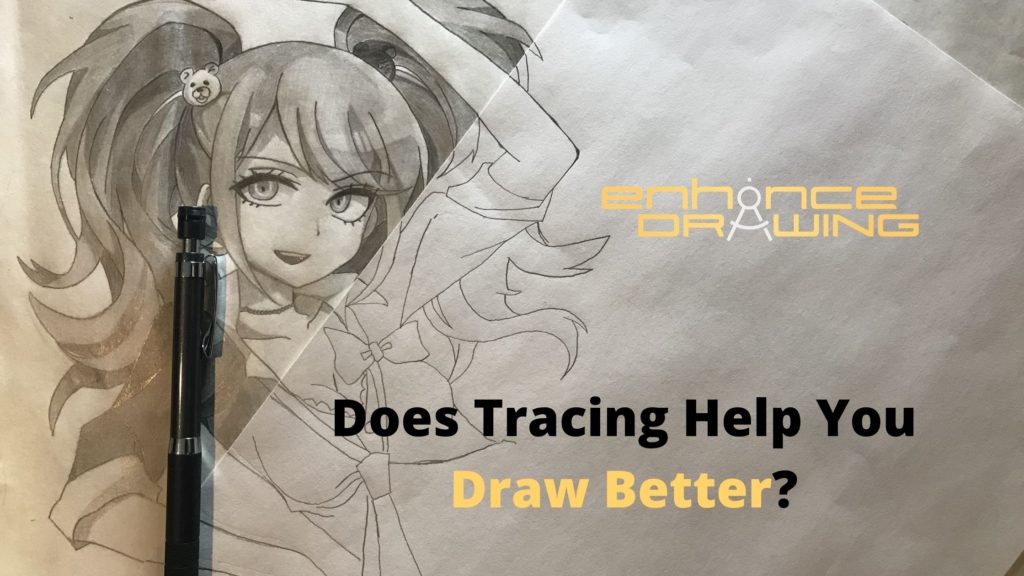
I was talking to some fellow artists the other day. We had this conversation about whether tracing helped us draw better as kids and adults, and, interestingly enough, many of us did it a lot in our beginning faces.
So after some research and experience, here’s what I discovered about tracing to help draw better.
Simply put, does tracing help you draw better? Tracing an image helps artists get used to the physical demands of drawing. It also helps them understand the basic drawing principles, such as proportion, perspective, and shapes. In many cases, tracing an image several times can make the artist draw it better freehand.
But mindlessly outlining won’t take any artist to draw better overnight. There are processes and aspects you can apply when tracing to improve your drawing skills.
How Tracing Helps You Draw Better
Now we know tracing can help us improve our drawing, but how does it do it? Let’s first understand why, before diving into techniques and exercises.
It helps you understand drawings. As a beginner, understanding how lines form complex shapes can be difficult because our eyes are designed to see things as a whole. Still, when you trace, you’re “forced” into looking at just one line at a time, and that will start helping your brain and eyes to understand how lines can form simple or complex shapes.
When drawing, it is always better to see the bigger picture of an image, but if you’re are learning, this a great way to start to comprehend it.
It helps you understand proportions. One thing many artists struggle with at the beginning -me included- is proportions. Sometimes, when drawing freehand, beginners will draw objects smaller or larger than they should be and make the drawing look unnatural. However, when you trace, all proportions will be right (if the drawing had them right), and you will start to get used to the size relationships between the objects within the drawing.
This aspect will mostly help you understand the proportions of the drawing you’re tracing, but the more you do it, the more examples you will have for your brain to get references.
It helps you understand perspective. Perspective is a crucial factor many artists miss in the beginning because we tend to draw everything as if it was in front of us, but you must draw all objects differently depending on your point of view. When you trace, you will start adding perspective to the drawing line by line, and you will begin to grasp how it should look.
The focus here is to see what lines create the objects’ perspective, and once you have identified that, try to place where the point of view is coming from.
It helps you get used to the physical demands of drawing. If your hand ever felt tired of writing, your hand will feel tired of drawing too. It is very common when writing to hold your pencil without much strength, but when you’re drawing, and you want to make a line as precise as possible, you will unconsciously apply a lot of force when holding your pencil to keep it steady. Although it is great to draw your lines right, putting that much stress on your hand and fingers for long periods of time can cause you injuries. And it is not usually necessary to do it.
To avoid injuries, consider the following:
- Take breaks: stretch your hands every 45-60 minutes. One minute of stretching is enough.
- Don’t Tense Your Hand: It is sometimes necessary to do it, but try not to have your hand tensed all the time.
- Use Your Shoulders: Sometimes, you will have to draw long lines. Use these opportunities to make your shoulder make all the movement, not your hand muscles and fingers.
The muscles your hand uses for writing are not the same for drawing. Tracing will help you explore your limits and find the best way to hold your pencil.
It helps you draw lines better. Although you will be only tracing lines, you need to be precise to trace them correctly. Usually, when artists draw, they don’t draw a line from start to finish immediately. Instead, they first sketch some lines until they find the right one and then make the final stroke little by little. When tracing, you will find yourself trying to change your hand positions to approach some lines, and this will help you practice how to approach every line in your future drawings.
Eye-hand coordination is crucial for artists, and tracing will help you improve it.
Now we have a clear idea of what we can learn from tracing drawings. Let’s now see how to approach tracing correctly to get the most out of this exercise.
How To Use Tracing To Improve Your Drawing
Based on what I said initially, tracing without intention won’t improve your drawing skills because you wouldn’t focus on why the artist drew every line but on keeping your pencil on a particular path. If you then try to draw the same drawing freehand, you won’t see much or any improvement in your skills.
But this can be solved easily.
To get the best out of tracing, you must practice it with a mindful purpose: studying how the original artist created the piece. To do so, we will use a simple drawing and will focus on the these 2 simple aspects while tracing:
This is my little sister’s try!
To see if it actually works, she was the best candidate.
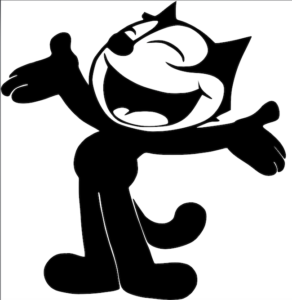
- Shapes: Find what the main shapes that give form to the drawing are. Here, you’re trying to decipher how the artist created the sketch from the inside. Once you find the shapes, trace them like in the example below. Knowing the shapes will help you draw it without tracing.
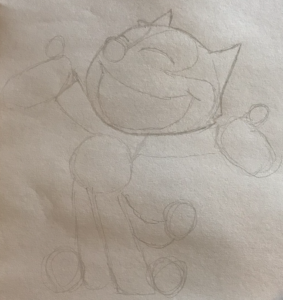
- Perspective/Pose: Take note of the direction the body and face are positioned. In this case, the body and face are leaning backward. Draw a line that helps you see, feel, and remember the body position.
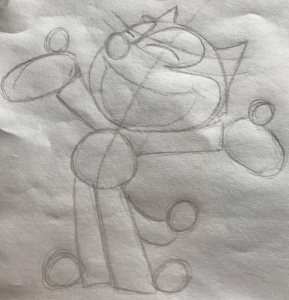
Draw It Freehand. Now that you had divided the body into shapes drawing its structure won’t be as challenging as it was before tracing it. Now you know it’s an oval for the head, a circle for the torso, two rectangles for the arms, two rectangles for the legs, one rectangle for the tail, and some other ovals and circles for the tail, hands, and feet. Since these are not unfamiliar to you, you will be able to draw them easily.
My little sister finished the tracing and then drew Felix freehand and without looking at him. This is how it looks like:
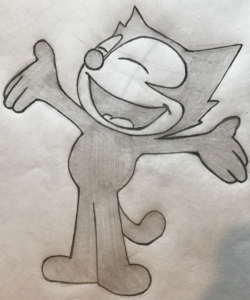
Not bad for a 15-20 minutes exercise! You can feel the legs should’ve been a little larger, the body should’ve been more leaned backward and some other things, but it definitely looks like Felix The Cat, and that’s what matters the most. Plus, she now knows what she needs to fix to draw it better next time.
You can take this exercise to many different levels, and the more you do it with a single drawing, the better you will get at drawing it freehand and without reference. Eventually, you will add it to your visual library and draw it easily anytime and anywhere you want.
In case you wanted to see more examples, here’s a video that explains this very well too!
How Good Can You Get At Drawing By Tracing?
For any exercise you practice, there will be limits of how much you can learn from them. And this doesn’t exclude tracing.
I like to see tracing this way: it is the artistic equivalent of training wheels. It helps you avoid falls and get you through the basics, but you will eventually need to stop using them and crash into some bushes learning the more advanced techniques.
You can trace drawings like the one we did, maybe some looney toons after and then some anime characters after that, and you will most probably see improvements if you do it right, but one just cannot trace The Mona Lisa and expect to draw it perfectly after some minutes. If you can even trace at that level of detail – I cannot! For that level, you will have to learn the theory and practice a lot.
What Else Can I Do To Improve My Drawings After Tracing?
As I just mentioned, the next thing you’d like to do to get better at drawing is learning about the theory of drawing and getting into more complex exercises.
The approach and practices you pick vary depending on what drawing style you would like to have. If you want to get better at drawing anime, the things you would have to learn are very different from realism. This last thing is vital because you will find more and more subtopics born from the main style you choose, no matter what route you pick, making learning any drawing style to a reasonable level a long process. It all depends on the kind of artist you want to become.
